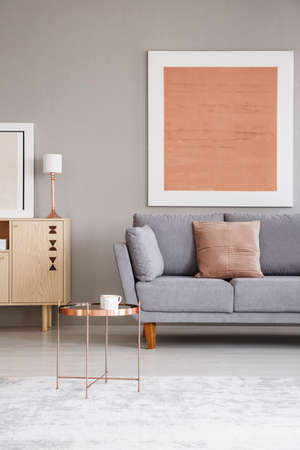Introduction to Human-Centred Design in British Living Spaces
The British home has long been a testament to the nation’s rich heritage of comfort, craftsmanship, and an intuitive understanding of how space shapes daily life. Rooted in traditions that value both form and function, British attitudes towards domestic interiors have evolved to embrace not only aesthetic charm but also the necessity of physical well-being. Today, as lifestyles shift and home environments become increasingly multifunctional, ergonomics—once the preserve of office design—now takes centre stage in residential settings. The rise of nature-inspired furniture reflects this cultural shift, blending timeless British appreciation for artisanal skill with a new commitment to designs that support health and comfort. Whether in a Victorian terrace or a contemporary flat, British homeowners are seeking out furnishings that echo the soothing lines and materials of the natural world while ensuring every chair, table, and sofa enhances daily living. This focus on human-centred design demonstrates a uniquely British blend of respect for tradition and openness to innovation—qualities that are redefining what it means to feel truly at home.
2. Nature as Inspiration: A Brief Cultural Overview
British furniture design has long been shaped by a deep-rooted connection to the natural world. From the rolling hills of the Cotswolds to the ancient woodlands of Scotland, local landscapes have inspired both form and function within British homes. This cultural affinity for nature is expressed through material choices, decorative motifs, and even the ergonomics of everyday furnishings.
One cannot discuss British furniture without acknowledging the influence of native timbers such as oak, ash, and beech. These woods not only provide durability but also carry the character of their origin—each grain pattern telling a unique story shaped by local climate and soil. Gardens, another cornerstone of British life, often serve as muse for designers who translate floral patterns, leaf silhouettes, and organic curves into upholstery fabrics or carved embellishments.
The countryside itself offers a wealth of visual references that are seamlessly woven into furniture aesthetics. Whether it’s the soft undulations reminiscent of moorland horizons or motifs echoing wildflowers found along hedgerows, these elements evoke a sense of place and tradition. The following table illustrates how different aspects of Britain’s heritage and landscape are reflected in common furniture features:
Natural Element |
Furniture Feature |
Cultural Significance |
|---|---|---|
Local Woods (Oak, Ash) |
Sturdy frames, exposed grains |
Symbolise longevity and regional pride |
English Gardens |
Floral upholstery, botanical carvings |
Reflect a love for gardening and seasonal beauty |
Countryside Motifs |
Curved lines, nature-inspired patterns |
Evoke tranquillity and rural heritage |
This interplay between nature and design not only grounds British interiors in their geographical context but also enhances ergonomic comfort by creating spaces that feel both familiar and restorative. Such an approach underlines the enduring appeal of nature-inspired furniture within British houses.
![]()
3. The Ergonomics of Relaxation: British Preferences in Seating and Lounging
Ergonomics plays a pivotal role in shaping the everyday rituals of comfort within British homes, particularly when it comes to seating and lounging. Sofas, armchairs, and window seats are not merely functional; they embody a blend of nature-inspired design and thoughtful ergonomics tailored to quintessentially British routines such as enjoying tea-time or unwinding with a book by the fireplace.
Classic Comfort Meets Modern Science
In the UK, traditional seating like the Chesterfield sofa or wingback armchair carries an inherent respect for posture and support. These iconic pieces are often reimagined with ergonomic contours that echo the gentle curves found in nature – think of the supportive embrace of a tree branch or the soft dip of a mossy bank. Designers employ high-backed rests, deep cushioning, and tactile fabrics inspired by natural textures to ensure both aesthetic appeal and spinal alignment.
Window Seats: A Nook for Contemplation
The much-loved window seat, frequently seen in bay windows across Britain, illustrates a harmonious marriage between ergonomics and biophilic design. Positioned to capture natural light and views of the garden or street, these built-in benches are designed for lingering comfort. Upholstered cushions follow the body’s natural lines while wooden frames draw from locally sourced oak or ash, celebrating both sustainability and tradition.
The Rituals of Rest: Tea-Time and Fireside Reading
British culture places great value on moments of pause—tea-time being perhaps the most emblematic. Ergonomically designed furniture provides the necessary support for these daily respites, whether one is perched on a plush armchair sipping Earl Grey or reclining on a sofa with a novel in hand. The integration of nature-inspired elements—floral upholstery patterns, earthy tones, and organic forms—further enhances a sense of tranquillity, transforming ordinary routines into restorative experiences rooted in comfort and cultural identity.
4. Sustainable Materials with Local Flair
One of the defining features of nature-inspired furniture in British homes is the deliberate choice of sustainable, locally-sourced materials. This approach resonates deeply with the British sensibility, where an appreciation for both tradition and environmental stewardship runs strong. Furniture designers across the UK increasingly favour resources like oak, ash, and wool—not only for their inherent ergonomic and aesthetic qualities but also for their deep-rooted connection to local landscapes and heritage.
The Allure of Native Hardwoods
British oak and ash have long been prized for their durability, rich grain patterns, and tactile warmth. These native hardwoods lend themselves beautifully to ergonomic designs, naturally supporting the human body while ensuring longevity—an essential consideration in homes that value both comfort and sustainability. The use of these woods reflects a respect for centuries-old woodland management practices, promoting biodiversity while supporting local economies.
Comparative Qualities of Key Materials
| Material | Origin | Properties | Sustainable Benefits |
|---|---|---|---|
| Oak | Native British woodlands | Sturdy, attractive grain, ages well | Renewable, supports local forestry |
| Ash | Widespread in the UK | Flexible, shock-absorbent, light tone | Fast-growing, promotes woodland health |
| Wool | British sheep farms | Soft, insulating, breathable | Biodegradable, supports rural communities |
The Role of Wool in Upholstery and Textiles
Wool is another staple material that brings a uniquely British flavour to interiors. Sourced from local sheep breeds such as Herdwick or Cheviot, British wool is celebrated not only for its comfort but also for its environmental credentials. It is naturally renewable and biodegradable, offering superior thermal regulation that suits the often unpredictable British climate. From plush armchair covers to tactile throws draped over sofas, wool infuses living spaces with softness while upholding eco-conscious values.
Cultural Resonance and Modern Relevance
This commitment to using homegrown materials goes beyond mere practicality; it taps into a broader cultural narrative about place, responsibility, and continuity. By choosing locally-sourced oak or handwoven wool, British homeowners affirm their ties to the land and contribute to a circular economy that prioritises regeneration over extraction. As such, nature-inspired furniture becomes more than just a design choice—it becomes a statement about living thoughtfully within ones environment.
5. Blending Heritage and Modernity: The Role of Contemporary British Designers
Contemporary British designers have become deft alchemists, fusing the rich tapestry of the nation’s design heritage with the organic inspiration found in nature and the rigours of modern ergonomic science. This unique blend is not simply a stylistic exercise; it reflects a deeply rooted British sensibility that values both tradition and innovation in domestic spaces.
Celebrating Classic British Elements
At the heart of many nature-inspired furniture pieces is a reverence for classic British motifs—think the understated elegance of Arts and Crafts joinery, or the gentle curves reminiscent of Georgian architecture. Leading designers like Tom Dixon and Bethan Gray take cues from these time-honoured details, infusing their creations with subtle nods to heritage through choice of wood grains, hand-finished brass accents, or bespoke upholstery patterns evocative of historic countryside estates.
Organic Forms Meet Ergonomic Expertise
While honouring the past, contemporary designers embrace innovation by integrating organic forms that echo Britain’s diverse landscapes—from rolling hills to ancient forests—into furniture silhouettes. More than aesthetic homage, these flowing lines are meticulously engineered for human comfort, supporting natural posture and reducing strain. For example, Matthew Hilton’s chairs marry gently contoured seats with precision-angled backs, ensuring both visual harmony and physical wellbeing.
Sustainable Materials and Local Craftsmanship
Modern British makers place a strong emphasis on sustainable sourcing and local craftsmanship—a cultural priority that aligns with environmental awareness and community support. Furniture crafted from responsibly managed oak or ash not only references native woodlands but also underscores a commitment to longevity and ethical production, resonating with eco-conscious homeowners across the UK.
A Distinctly British Approach to Comfort
This harmonious convergence of heritage, organic inspiration, and ergonomics creates furniture that feels genuinely at home in British interiors. It allows householders to express personal style while enjoying the tangible benefits of thoughtful design—whether relaxing in an ergonomically sculpted armchair beneath a bay window or gathering around a table that echoes the soft curves of an English riverbank. In this way, contemporary designers are shaping a new chapter in Britain’s storied love affair with functional beauty.
6. Practical Harmony: Everyday Comfort in the British Home
In the heart of a British home, comfort is never just about plush cushions or supportive seats—its about creating a lived environment where daily rituals unfold with ease and contentment. The fusion of ergonomics and nature-inspired design does more than complement the interior; it shapes the way Britons experience their homes from morning tea to evening wind-down.
Shaping Daily Rituals Through Design
Whether its the kitchen table where families gather for a hearty breakfast or the armchair perfectly positioned by a bay window for reading, ergonomic furniture attuned to natural forms supports these cherished routines. Thoughtfully contoured dining chairs reflect the gentle curves found in British woodland branches, encouraging good posture during leisurely Sunday roasts. Sofas upholstered in earthy textiles echoing moorland hues invite one to sink in, fostering relaxation after a long day navigating city streets or country lanes.
Emotional Wellbeing and Subtle Connection
The influence of nature-inspired furnishings extends beyond physical comfort. Bringing elements like oak, wool, or rattan into interiors weaves an ever-present thread to the countryside—a source of pride and calm in British culture. This connection offers emotional anchorage, especially amidst urban bustle. A hand-turned wooden lamp or a moss-green footstool isn’t just a piece of décor; it’s a subtle nod to heritage, landscape, and seasonal rhythms.
Harmony in Diversity: Adaptable Spaces
British homes are often compact, requiring clever solutions that blend function with beauty. Modular sofas inspired by river pebbles can be rearranged for guests or quiet solitude, while extendable tables crafted from sustainably sourced ash mirror the adaptability prized in modern British life. The result is practical harmony—spaces that flex with everyday needs without compromising on comfort or style.
Ultimately, ergonomic and nature-inspired furniture in British houses nurtures both body and spirit. It transforms living spaces into sanctuaries where daily life feels lighter, rituals become more meaningful, and wellbeing flourishes—a testament to Britain’s enduring appreciation for design that honours both people and place.


